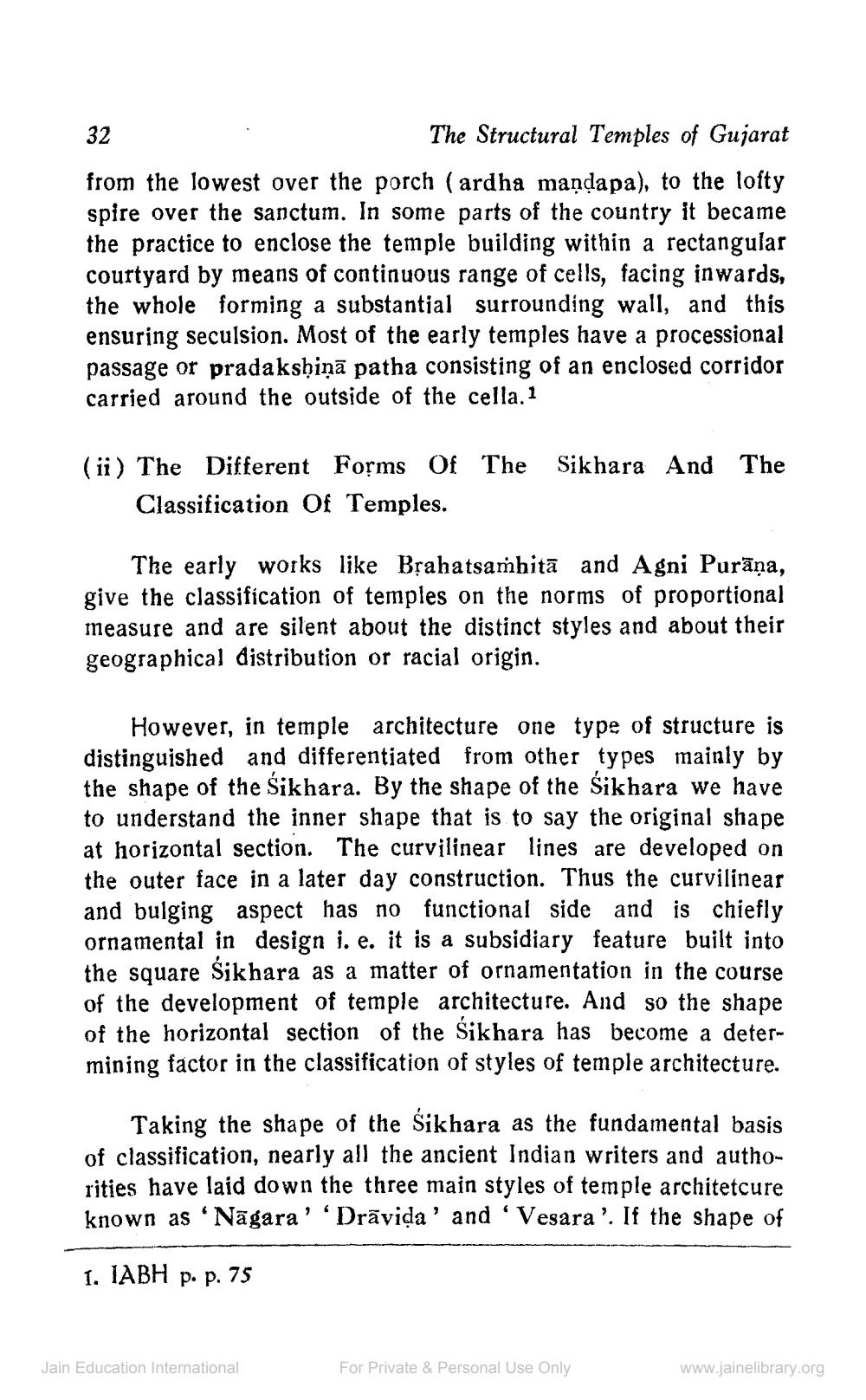________________
32
The Structural Temples of Gujarat from the lowest over the porch (ardha mandapa), to the lofty spire over the sanctum. In some parts of the country it became the practice to enclose the temple building within a rectangular courtyard by means of continuous range of cells, facing inwards, the whole forming a substantial surrounding wall, and this ensuring seculsion. Most of the early temples have a processional passage or pradakshiņā patha consisting of an enclosed corridor carried around the outside of the cella. 1
The
(ii) The Different Forms Of The Sikhara And
Classification Of Temples.
The early works like Brahatsamhita and Agni Purāņa, give the classification of temples on the norms of proportional measure and are silent about the distinct styles and about their geographical distribution or racial origin.
However, in temple architecture one type of structure is distinguished and differentiated from other types mainly by the shape of the Sikhara. By the shape of the Sikhara we have to understand the inner shape that is to say the original shape at horizontal section. The curvilinear lines are developed on the outer face in a later day construction. Thus the curvilinear and bulging aspect has no functional side and is chiefly ornamental in design i. e. it is a subsidiary feature built into the square Sikhara as a matter of ornamentation in the course of the development of temple architecture. And so the shape of the horizontal section of the Sikhara has become a determining factor in the classification of styles of temple architecture.
Taking the shape of the Sikhara as the fundamental basis of classification, nearly all the ancient Indian writers and authorities have laid down the three main styles of temple architetcure known as "Nāgara' 'Drāvida' and 'Vesara'. If the shape of
1. IABH p. p. 75
Jain Education International
For Private & Personal Use Only
www.jainelibrary.org




